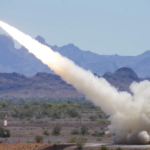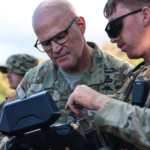
The Army Research Lab has tapped Logos Technologies to further develop and deploy technology to detect and locate hostile gunfire and explosions under a $9.7 million contract. The Optical Gunfire, Rockets and Explosive Flash Detection (OGRE) system uses high-speed cameras to capture the signature of a fired weapon or detonation and provide precise source coordinates to ground troops, the company said in a July 28 statement. OGRE is coupled with an existing acoustic sensor developed by the Army’s Aviation and…













